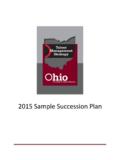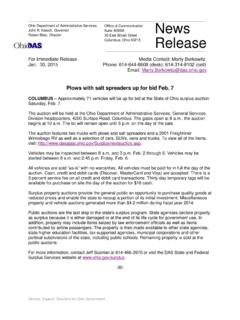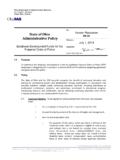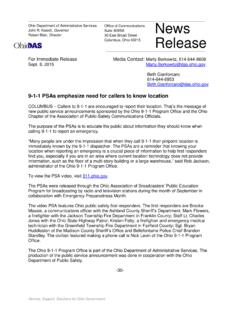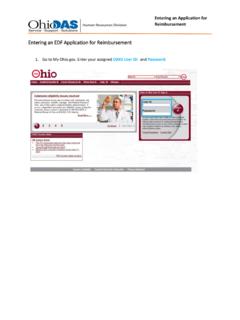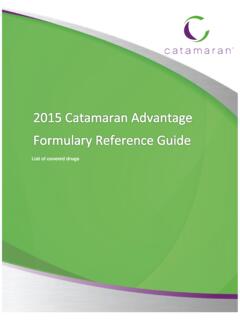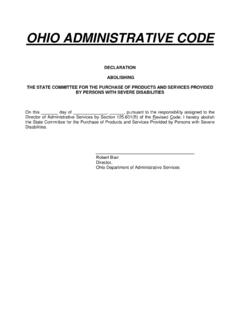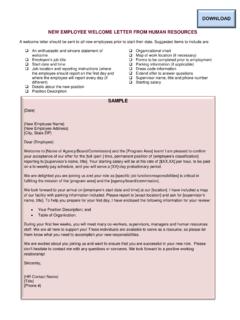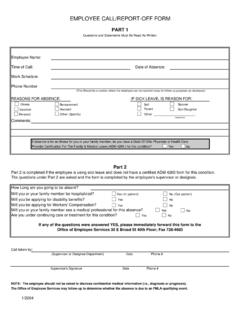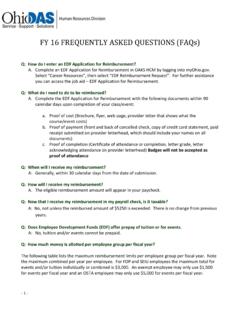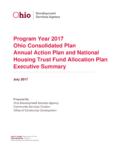Transcription of 2013 Workforce Planning Guide and Sample Plan
1 2013 Workforce Planning Guide Page 1 of 28 2013 Workforce Planning Guide and Sample plan 2013 Workforce Planning Guide Page 2 of 28 Table of Contents: Section 1: Agency Overview Executive Summary of Workforce plan Page 3 Agency Mission Page 4 Agency Goals and Objectives Page 4 Agency Table of Organization Page 4 Section 2: Demand Agency Demand/Workload Analysis Page 6 Summary of Workload Transaction Measurements and Numerical Data Page 8 Section 3: Supply Agency Supply/ Workforce Analysis Page 10 Open/Filled Report by Division Page 10 Supervisor Span of Control Page 12 Summary of Workforce Indicators from BI Data Page 15 Section 4: Gaps Internal/External Challenges Page 19 Gap Analysis Page 20 List of Gaps Prioritized Page 20 Section 5: Actions Agency Action plan Page 21 Agency Future Action(s) Page 23 Critical Milestones to Ensuring Workforce Planning Implementation Page 26 Challenges if Gaps and Future Actions go Unaddressed Page 28 2013 Workforce Planning Guide Page 3 of 28 Section 1: Agency Overview Executive Summary of Workforce plan : The purpose of an executive summary is to summarize the key points of a document for its readers, saving them time and preparing them for the upcoming content.
2 An executive summary is an overview. The executive summary is typically authored, or written for, the agency s appointing authority. Think of the executive summary of the Workforce plan as an advance organizer for the reader. Above all else, an executive summary of the Workforce plan has to be clear and concise. The executive summary is often called the most important part of the business plan as it sells the document to the reader. If it doesn t do what it s supposed to, the business plan will be set aside unread. Sample Executive Summary of Workforce plan : The ABC s Workforce plan (WFP) was developed based on a format, guidelines, and requirements outlined in two documents published by the Ohio Department of Administrative Services-Office of Workforce Administration. These documents include: 1.
3 Workforce Planning : Ohio, The State of Perfect Balance; and 2.) State of Ohio Workforce Planning Guide 2012. The WFP represents a thorough analysis of the ABC s Workforce data and the collective opinion of key agency senior leaders and staff persons within the organization. The WFP also represents the current challenges faced by our organization and the future challenges we anticipate facing that will have a direct impact on the operations of our agency. The challenges we will anticipate facing in the near future include: possible additional budget constraints, increased workload, rising costs, employee retention, and the transfer of institutional knowledge. Although these challenges will have some impact on the timeliness and level of services our organization provides, we do not believe they will keep the organization from accomplishing its overall mission.
4 More specifically, the ABC s WFP provides us with: - A framework for making staffing decisions linked to agency mission, goals, and objectives - A means of aligning fiscal, technological, and human resources to meet agency needs - A tool to use when analyzing and presenting agency budget and resource needs The ABC s WFP followed traditional strategic processes. These processes include: - Evaluating the agency mission, goals, and objectives - Assessing projected workloads - Analyzing associated Workforce data - Determining where gaps exist and how to close them - Creating a Workforce plan 2013 Workforce Planning Guide Page 4 of 28 - Implementing established future actions - Systematically and constantly evaluating the plan to adhere to both statewide and agency specific operational needs To reduce the risk of not meeting our strategic plan , goals, and objectives the ABC has developed a Workforce plan of action that includes the following efforts: exit interviews, cross training, employee development, annual classification reviews, Workforce data reporting, and the increased use of technology to speed-up document processing.
5 We are confident that our WFP directly addresses our current Workforce challenges and we remain very optimistic about our ability to address foreseeable challenges. Agency Mission: Refer to your agency s business plan documents. Each State agency should have a mission statement. Sample Agency Mission: To provide service, support and solutions that improves state government in Ohio. Agency Goals and Objectives: Refer to your agency s business plan documents. Each State agency should have agency goals and objectives. List each goal that your agency has adopted in this section. Sample Agency Goals and Objectives: 1. Create less complex services delivery with fair and logical payment systems that are federally compliant. 2. Continue to be good stewards of limited resources. 3. Provide quality outcomes through a combination of people and processes.
6 4. Design service delivery models in response to choices made by the people we serve, in alliance with community supports. 5. Develop a system-wide vision of long-range strategic plan by listening to our funding partners, constituents and stakeholder. Agency Table of Organization: Attach your agency s table of organization to this document. Your agency s table of organization must comply with the DAS Table of Organization Guidelines and include every 2013 Workforce Planning Guide Page 5 of 28 office/division within your organization. Eligibility to retire should be visually depicted ( , Green = eligible immediately, Yellow = within 1 year, Blue = within 5 years). If you do not have an existing, up to date table of organization, you can create one by using OAKS BI (Point in Time Table of Organization report) and Visio.
7 Sample Agency Table of Organization: 2013 Workforce Planning Guide Page 6 of 28 Section 2: Demand Agency Demand/Workload Analysis: Important Questions to Answer: What programs do you expect to expand? What programs are expected to be consolidated? What programs or activities are expected to shrink or be consolidated? What employee classifications would be impacted by these changes? What employee classifications do you expect to have an increased demand for? Reference your agency s business documents to research projected workflow. Consult with senior management, program managers and budget staff to arrive at an accurate Workforce Planning forecast. 2013 Workforce Planning Guide Page 7 of 28 Sample Agency Demand/Workload Analysis: The ABC has seen a steady decline in staffing since FY 2010.
8 In FY 2010, the ABC had 82 positions. In FY 2013 , the ABC has 46 positions. Eleven are currently vacant. The chart below illustrates the reduction in staffing levels at ABC since FY 2010. The decrease in staffing is primarily due to a reduction in Workforce that was necessitated by a significant ( ) reduction in the agency s budget at the beginning of FY 2012. As additional positions were vacated over the last two years, various of these positions were left unfilled due to further anticipated budget reductions, among other things. The ABC s funding was maintained at its FY 2012 level through FY 2013 , by the General Assembly and Governor in the Mid-Biennium review (House Bill 487). Since this funding has been secured, the ABC has begun the search for qualified candidates to assume some of the open positions.
9 Some positions have remained vacant due to the challenges associated with recruiting qualified employees. These hiring challenges reflect that there is competition for hiring, including from private industry that offers greater compensation. Some of ABC s current employees have absorbed the duties of some of the unfilled positions. 2013 Workforce Planning Guide Page 8 of 28 Summary of Workload Transaction Measurements and Numerical Data: Provide a summary and numerical values of data that have been collected internally to measure employee work outputs. Keep in mind that measurements and measurement methodology for different employee groups may be very different. Analyzing this data may show the need for restructuring or whether it s necessary to backfill a position. Sample Summary of Workload Transaction Measurements and Numerical Data: Division of Fiscal Administration: Audits 1.
10 Total budgeted hours for review = 2. Total actual hours used for reviews = 3. 61 of the 73 waiver transaction reviews completed Accounting and Support Services 1. Number of payment card transactions = 366 2. Number of deposits = 3492 3. Number of vouchers = 2051 4. Number of purchase orders = 665 5. Number of checks = 11389 6. Number of telephone service requests = 179 7. Number of invoices = 1930 Managers in Fiscal are spending so much time on day-to-day activities that other important work is not getting done. Managers also perform their own administrative tasks and taking on other work because there is not enough staff. Fiscal plans to hire an administrative assistant and create some lead worker positions, which would also provide promotional opportunities for bargaining unit staff.
